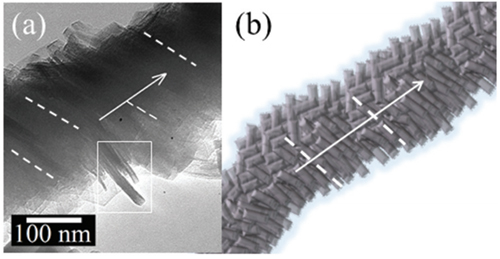Cellulose, a major constituent of our natural environment and a structured biodegradable biopolymer, has been shown to exhibit shear piezoelectricity with potential applications in energy harvesters, biomedical sensors, electro-active displays and actuators. In this regard, a high-aspect ratio nanofiber geometry is particularly attractive as flexing or bending will likely produce a larger piezoelectric response as compared to axial deformation in this material. Hierarchical self-assembled cellulose nanofibers (SA-CNFs), fabricated using a template-wetting process, are shown to exhibit distinct shear piezoelectricity. The SA-CNFs display helicoidal arrangement of rod-like cellulose clusters comprised of cellulose nanocrystals, where the helicoidal axis follows the longitudinal axis of the pores of the anodised alumina templates in which they are fabricated. Our studies pave the way for studying self-assembly in other piezoelectric chiral phase biomaterials, offering insight into possible routes towards engineering nanofibers with tailor-made electromechanical properties, by controlling the way in which chiral-nematic liquid crystals self-assemble via template-assisted nanoconfinement.
Figure: Hierarchical self-assembled cellulose nanofibers, fabricated using a template-wetting process, are shown to exhibit distinct shear piezoelectricity, paving the way towards engineered nanofibers with tailor-made electromechanical properties.
Y. Calahorra, A. Datta, J. Famelton, D. Kam, O. Shoseyov and S. Kar-Narayan, “Nanoscale electromechanical properties of template-assisted hierarchical self-assembled cellulose nanofibers”, Nanoscale 10 (2018) 16812-16821

